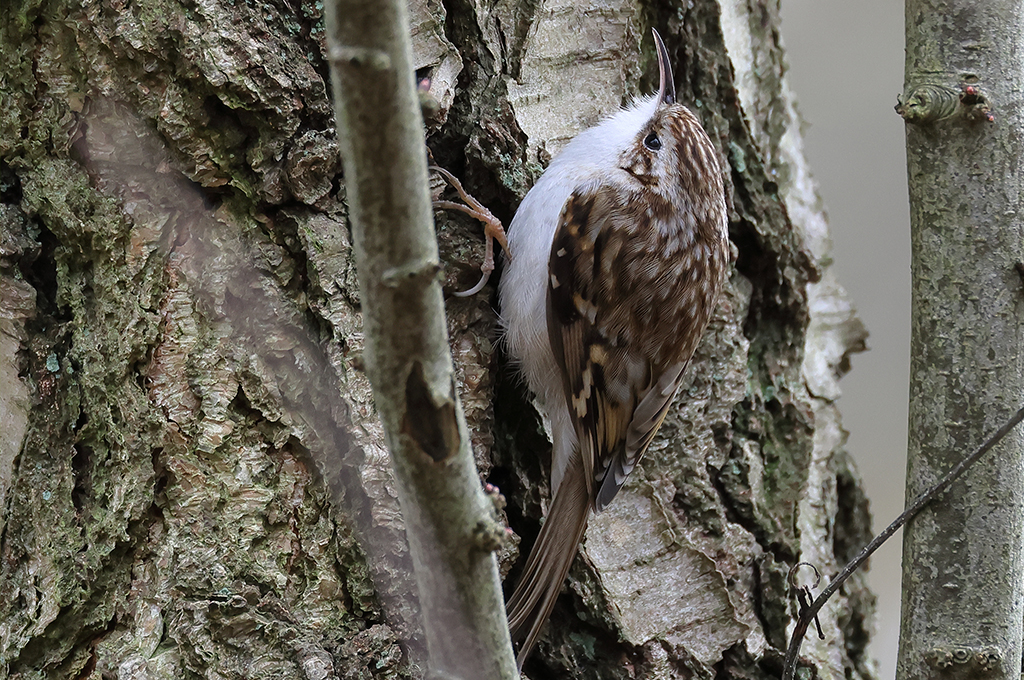I wish I was special

During our weekly bird survey, Steve Wilson a fellow member of the Conservation and Wildlife Action Group (CWAG) spotted this lovely Treecreeper Certhia familiaris resting on the trunk of a tree, just a few yards from where we were gathered. It’s not often you get the opportunity to see one this close up, they’re usually much higher up in the canopy.
The somewhat ‘mouse-like’ Treecreeper uses its long stiff tail feathers for added support as it creeps its way up a tree trunk looking for insects. Starting low down on the trunk it works its way to the top in a spiral. It then floats like a feather* to the next tree and starts the process again. We got lucky when we found this one at the start of its climb. Spotting us it froze momentarily, giving photographer Derek Griffin the opportunity to capture this terrific image.
It brings back memories of when I was learning to be a bird-ringer. My ever-patient and aptly-named trainer John Swallow would ask that we check each one thoroughly just in case we’d found a vagrant Short-toed Treecreeper Certhia brachydactyla. It’s tricky to separate the two species as plumage differences are very slight and measurements overlap but there are consistent differences in the pattern of the wing. I believe our native Treeceeper is also warmer and more spotted above, whiter below, has a shorter bill and a whiter stripe above the eye (the supercilium). Of course much of this is subjective and wasn’t much use to a somewhat nervous novice ringer like me. However, the ratio between the hind claw and bill is diagnostic which meant I had to carefully measure the length of these, something I remember the bird strongly objecting to.
* With apologies to the magnificent Radiohead and their fabulous song Creep
Read more


